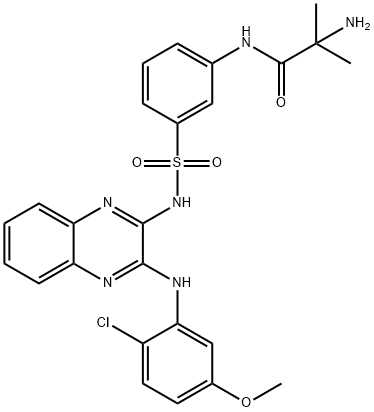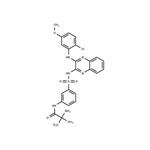Enzyme inhibitor
This selective, reversible, and ATP-competitive Class I PI3K inhibitor (FW = 541.02 g/mol; CAS 934526-89-3; Solubility: 100 mg/mL DMSO, when warmed; < 1 mg/mL H2O), also known as XL147, SAR245408, and N-(3- {[(3-{[2-chloro-5-(methoxy)phenyl]-amino}quinoxalin-2- yl)amino]sulfonyl}phenyl)-2-methylalaninamide, targets PI3Kα (IC50 = 39 nM, PI3Kδ (IC50 = 36 nM), and PI3Kγ (IC50 = 23 nM), but only weakly for PI3Kβ. Pilaralisib is active against human breast cancer cell lines with constitutive PI3K activation. PI3K inhibitors reduce AKT activity and relieves suppression of receptor tyrosine kinase expression and activity. XL147 shows dose-dependent inhibition of cell growth and levels of pAKT and pS6, signal transducers in the PI3K/AKT/TOR pathway. In HER2- overexpressing cells, pilaralisib inhibition of PI3K is attended by upregulation of expression and phosphorylation of multiple receptor tyrosine kinases, including HER3. Knockdown of FoxO1 and FoxO3a transcription factors suppressed the induction of HER3, InsR, IGF1R, and FGFR2 mRNAs upon inhibition of PI3K. In HER2(+) cells, knockdown of HER3 with siRNA or cotreatment with the HER2 inhibitors trastuzumab or lapatinib enhance XL147-induced cell death and inhibition of pAKT and pS6. When tested separately, trastuzumab and lapatinib synergized with XL147 for inhibition of pAKT and growth of established BT474 xenografts. Compared with XL147 alone, the combination exhibited a superior antitumor effect against trastuzumab-resistant tumor xenografts.



